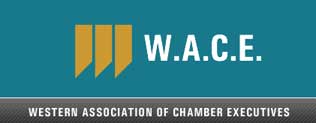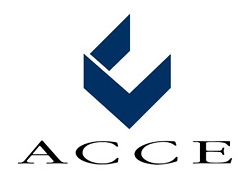It doesn’t matter where your chamber is located, chances are at some point the businesses in your community will be dealing with a natural disaster of some kind. Whether it’s one you know is headed your way, or you’re caught completely unaware, there are many ways the chamber can help its business community.

Chamber as Connector, Convener, and Catalyst for Businesses Before, During, and After a Natural Disaster
As someone who evacuated right into the path of a hurricane recently, I will admit, the best thing any individual or business can do to do is to prepare ahead of time. No, you may not know the specifics of the type of disaster that could face you until it comes, but there are some parts of disaster preparation that are similar whether you are facing a forest fire, tornado, hurricane, earthquake, or massive flood.
The same applies to the your chamber of commerce for itself and on behalf of your businesses and community.
The chamber roles of connector, convener, and catalyst are the exact things you’ll be doing to prepare, ride out, and recover from a natural disaster. If you don’t already have a preparation plan in place, start here.
1. Creator of a Business Continuity Plan
Put together a business continuity plan for the chamber which lists plans based on various scenarios and contains this information:
- the chamber is operational at its current location; the chamber is not operational
- chamber staff is available; chamber staff is not available–detailing roles and responsibilities
- potential business impact: most likely scenario
- planning an effective response and communication plan
You’ll want to detail the steps to get back to business as usual with a business continuity plan.

But the role of the chamber isn’t solely about getting back online and opening the doors so you can get back to business. As a leader and supporter of the business community, your business continuity plan is a plan for everyone.
After you create your business continuity plan, here’s what you can do for the rest of your business community.
Chamber Roles Before, During, and After a Natural Disaster
2. One Stop Information Shop
If the natural disaster is one that is predicted, or comes with warning like a hurricane or a spreading forest fire, business owners will undoubtedly turn to each other to find out what everyone else is doing. The Chamber is in the perfect position to help disseminate information and act as a one-stop shop for everything people need to know about the impending danger.
Time permitting, you may be able to put together best practices or connect businesses that can help one another.
3. Fact Checker
When a disaster strikes, there’s a lot of misinformation. You may be called upon to communicate the true information before, during, and throughout recovery. Who’s up and running, who is open for business, who has decided not to reopen, etc. are things many will want to know.
People in your community and beyond will want updates and you may be in a perfect place to provide the much needed information. You may also get the opportunity to set the record straight on false reporting that could damage your town’s reputation or ability to attract tourists in the future.
4. Live Cam Operator
For people who chose to leave your town (as in the case of an evacuation), those who have vacation homes and don’t permanently live in your area, or friends and family of community members, having video or web cam streaming can be a big relief.
Video tells a story that is much easier communicated than by using words in some situations. As an unofficial videographer, you and your chamber website can literally let people see what’s going on during or after the natural disaster, keep people in touch through video, and become a valuable resource to them as they plan to return and/or rebuild.
There is a surprising number of live webcams that are available for the public. Weather or traffic websites often have listings. These live webcams can be comforting (or alarming) during forest fires or floods. Because webcams can come and go, be sure to check and update your listings frequently.

5. Educator
Before the disaster hits and after, you may be called upon to educate people on a number of topics including issues of safety and recovery. You may need to tell them what federal programs and assistance are available and how they apply for those things.
It will be up to you and those you draft to get the message out. Sure, they can Google this information but if you’re the one putting it out there they know they can trust it.
6. Traffic Coordinator
During the natural disaster, people from federal and state agencies may need someone on the ground providing updates. While that person may turn out to be a mayor or elected official, the chamber’s lack of political affiliation may be used as a neutral party to convey important information and the coordination of available resources.
After the disaster occurs, you may be called upon to continue to coordinate resources and their distribution. If it is a large-scale disaster and one that receives national coverage, there may be a lot of resources coming to your area. There may also be many questions as to what people need.
If there’s something your town and businesses have a lot of, or conversely, something they desperately need, you could have the megaphone and ability to communicate these needs to the country.
Additionally, you could find yourself serving as the…
7. Communications and PR Maven
Again, the chamber is ideally connected to everyone in the area. You are in a unique position that is not governed by elections, political processes, or parties. You can connect and convene the people who have resources with those who need them.
At this stage, you may take on the public information officer role giving updates on progress and recovery. You may speak to reporters, FEMA agents, government officials, and nonprofit volunteers.
As recovery continues, you won’t get as much PR as you did immediately following the disaster. Most people have a short attention span when it comes to needs and causes. Because of this you will need to be a champion for your area and continue to voice their needs and progress as your businesses recover.

8. Cheerleader and Inspirational Guru
As the area recovers, you will likely face set backs. You could be hit with another disaster or an unexpected delay. Supply chain delays, shortages, and a lack of available labor may become a barrier to recovery. Business owners and employers will feel discouraged as they build back. They will need someone cheering them on and telling them recovery is possible.
You will need to channel your inspirational guru and get out there encouraging your community. It will be hard and you will want to give up, just as they do.
And that’s when you will become the…
9. Chief Storyteller
You will be the one to share the success stories of your community. You will also share stories of helpers and good news. Your stories will elevate and inspire. The chamber is the ideal recovery story creator.
10. Plan Drafter for Next Time
Finally, although it may be heartbreaking to do, compile a document (or video) of lessons learned from your experience.
- What would you have done differently?
- Whose help made a difference?
- What entity or person could’ve been more helpful?
- What information was missing that would’ve greatly impacted outcomes?
- What were your largest vulnerabilities?
Compile all that information and consider who would benefit from it. Is it something to share with the governor or mayor? Would the emergency management agency have been more effective if they knew what you did?
In a natural disaster, there are always variables and unknowns. But as you reassess and recover think of the lessons that you learned and the advocacy that may be needed on your community’s behalf.
- Is there legislation or funding that could help in the future?
- Is there something wrong with insurance, process, or procedure?
- Is there a loophole that caused problems?
- How might the chamber bring together the people who can fix the situation?
Ask members and community members for their impressions. Create a recovery booklet or pull together resources from state, federal, and local agencies. Record protocols and lessons learned. Make a list of valuable contacts.
Finally, you can’t do all this by yourself. It’s a big load on the best of days let alone when your heart is breaking over the loss in your community. Make sure as part of your natural disaster recovery plan that you know where your support and inspiration will come from. You need someone in your corner, too. And there’s a host of chamber professionals waiting to help.

